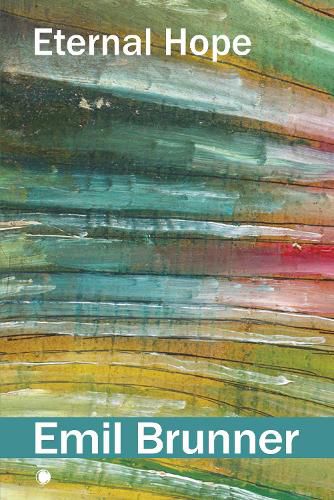Readings Newsletter
Become a Readings Member to make your shopping experience even easier.
Sign in or sign up for free!
You’re not far away from qualifying for FREE standard shipping within Australia
You’ve qualified for FREE standard shipping within Australia
The cart is loading…






Describing his objective in writing Eternal Hope, Emil Brunner boldly claimed that 'a church that has nothing to teach concerning the future and the life of the world to come is bankrupt'. Several decades later, such a challenge might still be levied. Against this backdrop, Brunner offers a way forward that remains closely tied scripture, yet is nevertheless pastorally sensitive. Indeed, one of the central tenets of his approach is that the Gospel offers no comfort to the individual that is not at the same time a promise for the future of humanity as a whole. He proceeds systematically through the promises and mysteries that the Christian faith maintains surrounding death, while holding the hope of eternity as a constant goal. A precursor to his more rigorous Dogmatics, and partly in preparation for the second assembly of the World Council of Churches in 1954, Eternal Hope was also written just a year after the tragic death of Brunner's son. It is therefore no surprise that he combines the vulnerability of his personal encounter with death, and a theological outlook that has universal implications.
$9.00 standard shipping within Australia
FREE standard shipping within Australia for orders over $100.00
Express & International shipping calculated at checkout
Describing his objective in writing Eternal Hope, Emil Brunner boldly claimed that 'a church that has nothing to teach concerning the future and the life of the world to come is bankrupt'. Several decades later, such a challenge might still be levied. Against this backdrop, Brunner offers a way forward that remains closely tied scripture, yet is nevertheless pastorally sensitive. Indeed, one of the central tenets of his approach is that the Gospel offers no comfort to the individual that is not at the same time a promise for the future of humanity as a whole. He proceeds systematically through the promises and mysteries that the Christian faith maintains surrounding death, while holding the hope of eternity as a constant goal. A precursor to his more rigorous Dogmatics, and partly in preparation for the second assembly of the World Council of Churches in 1954, Eternal Hope was also written just a year after the tragic death of Brunner's son. It is therefore no surprise that he combines the vulnerability of his personal encounter with death, and a theological outlook that has universal implications.